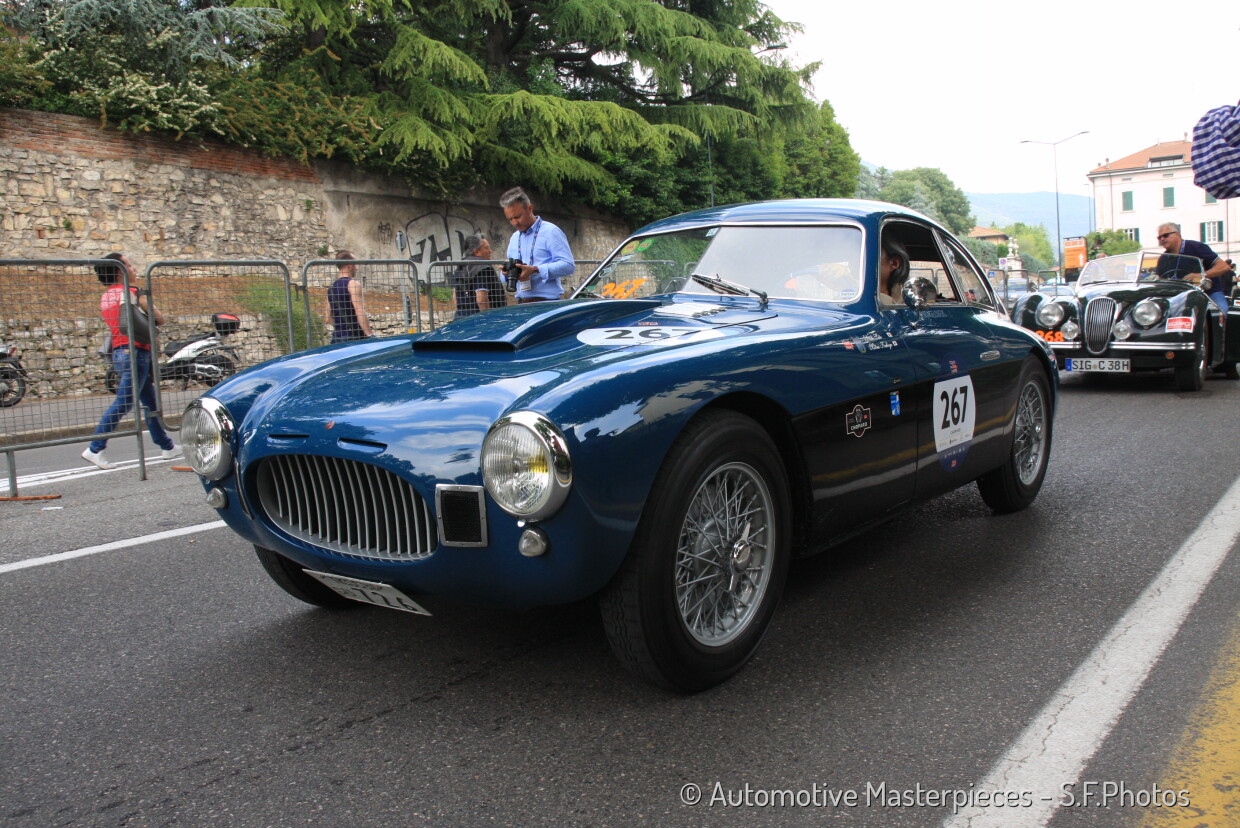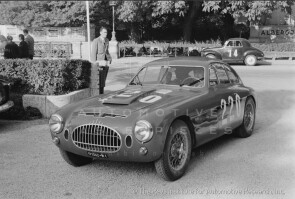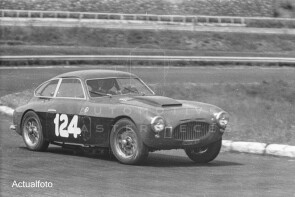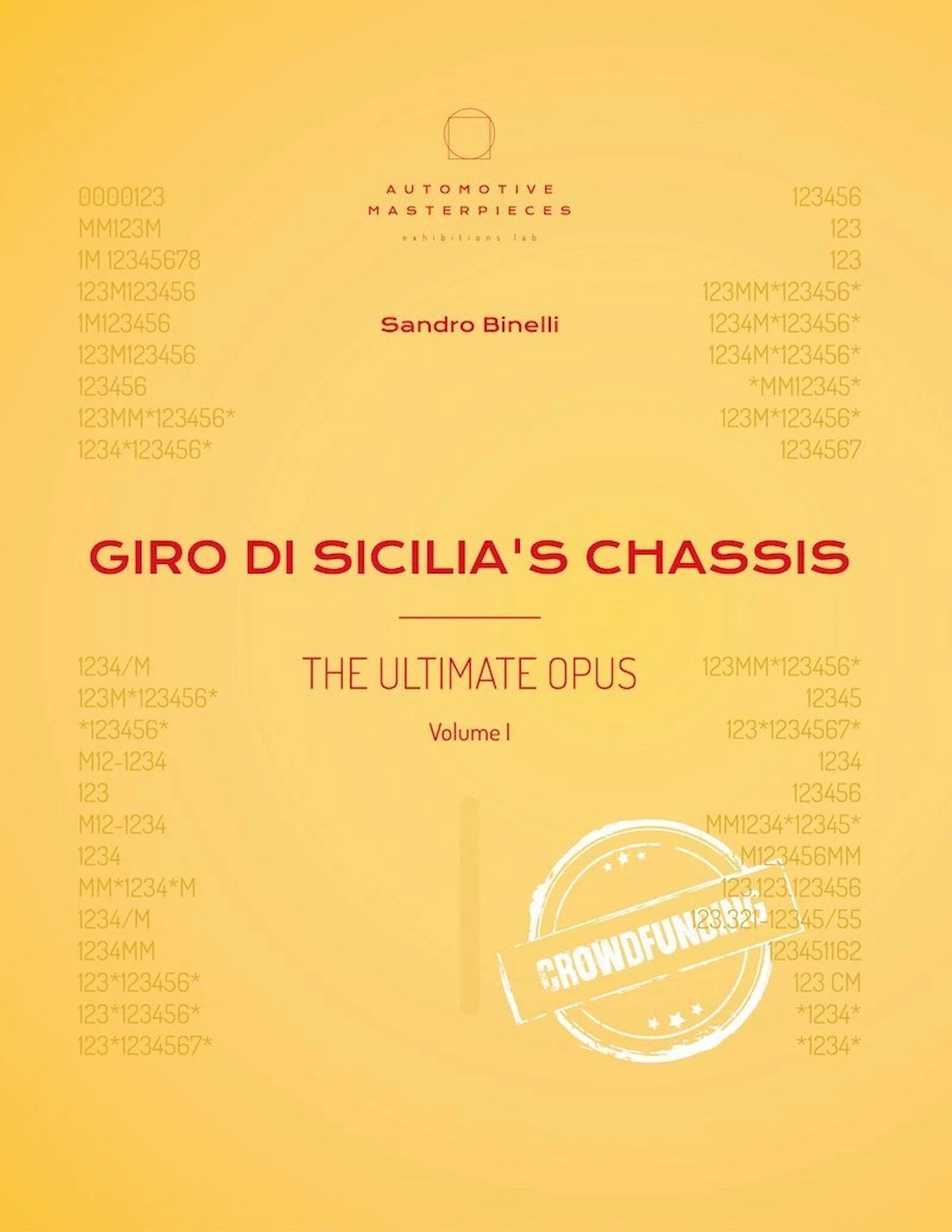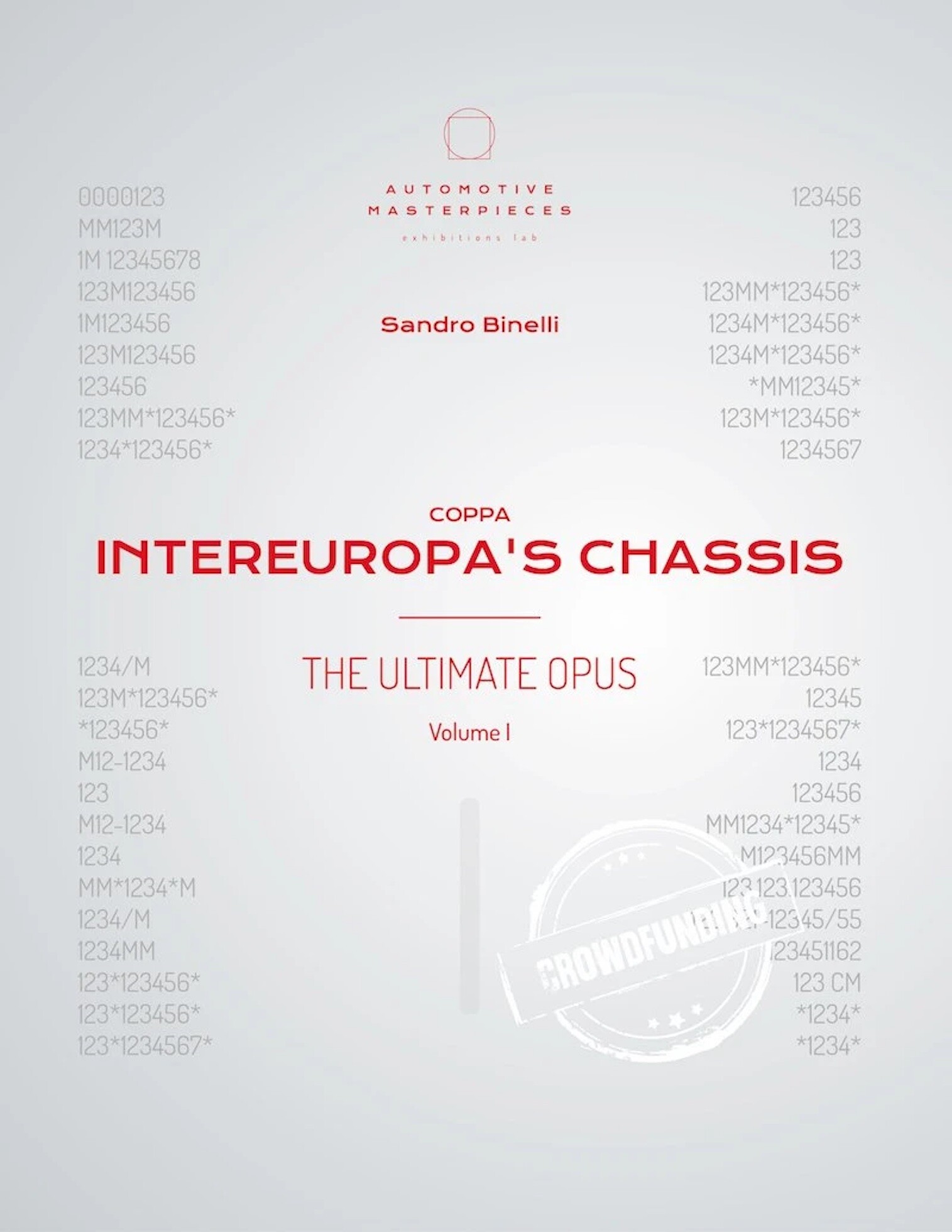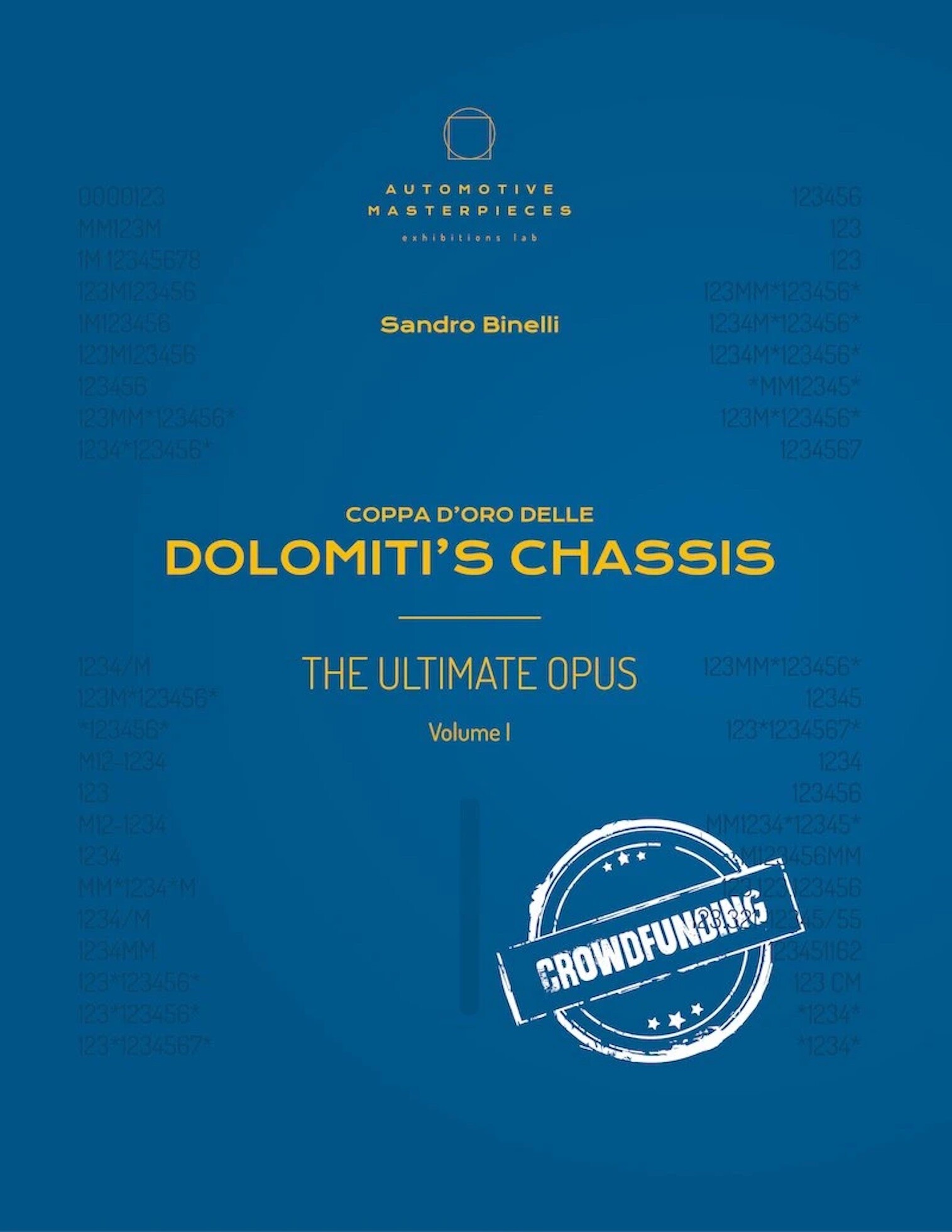
1952 Fiat 8V ZAGATO
ON/OFF
Why am I an Automotive Masterpiece?
G. Team cars
Scuderia Ambrosiana - Milano (IT)
K. Famous chassis’ cars
Oldest chassis surviving, 1st of the 8V by Zagato
L. Limited edition cars
no. 6 manufactured, no. 4 remaining, 2nd built. 2nd of the 6 pre-production 8V
In the postwar period, Fiat was working on an eight-cylinder engine internally known as Tipo 106. The engine was originally designed by Dante Giacosa for a luxury sedan, but that project was stopped. Rudolf Hruska, at the time working at the S.I.A.T.A., was given the task to design a car around the V8 engine. The development took place in absolute secrecy. As not to stress the experimental department of Fiat, production of the chassis was also taken up by S.I.A.T.A. Styled by chief designer Fabio Luigi Rapi, the Fiat 8V or “Otto Vù” was presented to the Italian press in February 1952 and first exhibited the following March at the Geneva Motor Show. The car shapes saw several changes in time: the prototype used an art deco grill extending into the hood which initially characterized the examples of the first series. A second series was made featuring four headlights with some of the later cars having a full-width windscreen. A high-performance coupé, destined to compete in the GT class: the 2-liter 8V model was a departure from the usual Fiat production. It was really welcomed by Italian private drivers, it inspired the tuners and it was, in a word, the car to beat in the 2-liter class, also thanks to the special versions built by Zagato or Siata. The Fiat V8 had a 70° V configuration of 1996 cc of displacement, at 5600 rpm the engine produced 105 hp in standard form with double two-barrel Weber 36 DCS carburetors, giving a top speed of 190 km/h. Some engines were fitted with two huge four-throat Weber 36 IF4/C carburetors offering 120 hp, but the intake manifold was very rare. The Fiat 8V is the only eight-cylinder built by Fiat. The engine was connected to a four speed gearbox. The car had independent suspension all round reworking the Fiat 1100 ones and drum brakes on four wheels. As the body was welded to the chassis it was a semi-unitary construction. Only 114 of these high-performance coupés had been produced, 64 of them with a “Fiat Carrozzerie Speciali” body, 34 first series and 30 second series. It was made available anyway in different body styles, offered by the factory and by various coachbuilders like Zagato, Pinin Farina, Ghia and Vignale. The production ceased in 1954.
The relationship between the Fiat 8V and Zagato began in 1952 when Ovidio Capelli, gentleman driver and FIAT dealer in Milan, commissioned a special body for his 8V chassis no. 000002 to Zagato. Cappelli was looking for a car that was lighter and faster than the production 8V designed by Fabio Luigi Rapi. The one-off was built in aluminum, embodied an “essential beauty” in terms of design, and had excellent racing qualities thanks to its lightness and agility. Cappelli’s victories convinced Fiat and Zagato to build together a small series of the 8V, leader in the GT class. Elio Zagato himself, as a perfect front man for the family business, also achieved good racing results with these cars. Carrozzeria Zagato bodied 31 cars, of which 22 were new from the bare chassis, and the other 9 were re-bodied examples originally with Fiat bodywork; within this group, there were 5 “Elaborata” (derived from the Rapi-designed model), and a one-off spider. Only six cars were built with the famous “double bubble” roof.
Chassis no. 106*000002* is that very car. It started its life in early March 1952 and was the second of only six experimental pre-production models of the Fiat 8V made; they all had a Carrozzerie Speciali Fiat first body and four of them are known to have survived to date. 106*000002* is nowadays the oldest surviving of all Fiat 8V produced, being 106.000001 destroyed in tests at the time. These early cars featured louvres on the engine hood and slightly different doors without the aluminum window frames of the later production cars. A particularity to note about 106*000002* is the different position of the chassis number compared to the production cars that followed: on those, it is stamped on the "parafiamma", next to the identification plate; on this one, however, it is found on the right lower frame, near the suspension; moreover, the stamped number is "only" 000002 and not 106*000002* as the identification plate reports and as it is on the later 8Vs. Given the certain historical continuity of the specimen and since the 106*000001* was destroyed, it is not known and it is possible that these early, effectively experimental chassis were numbered this way and that the position of the stamping on the parafiamma was adopted only later. The engine numbering is also particular: if the plate shows the number according to the usual formulation (104.000*000006*), the number stamped on the engine block differs just slightly and is followed by three "stars" (104 000 000006***). According to the well-known model expert, Tony Adriaensens, it is very likely that chassis no. 106*000002* is the specimen presented at the Salon International de l'Auto in Geneva in March 1952. This event is to be verified, as there are still doubts; in fact, the specimen was born with different dashboard and details, such as the position lights, while other pre-production specimens seem more similar to the specimen exhibited in Geneva, and their production dates make this possible. Nevertheless, the sports career of 106*000002* undoubtedly delivers it to history: it boasts in fact four participations in Mille Miglia and a lot of racing, always under the auspices of the “Scuderia Ambrosiana” team. The car was sold new by the Ditta Ovidio Capelli to the Scuderia Ambrosiana, on May 3, 1952, receiving its first and only license plate to date (MI 191062). It is the same day of the departure of the Mille Miglia, in which the car is registered with Ovidio Capelli at the wheel, but circumstances put his nephew Diego in the driver's seat. Images before the start show a unique dashboard set-up: a 210 Kph speedometer and the Technomedion are inverted compared to the prototype and the little rev-counter is replaced by a big and more accurate Jaeger unit with the SIATA logo, revealing Ambrosini’s assistance in the preparation and final set-up. Sadly, shortly after leaving the ramp in Brescia, Diego got off the road and his race was over. Ovidio Capelli took the opportunity and entrusted the car to Carrozzeria Zagato to make it more competitive: a one-off lightweight aerodynamic coachbuilt prototype that led to the creation of the 8V ZAGATO, a racing-dedicated version in only 30 examples, of which 24 with normal roof and 6 with “double-bubble” roof, boasting a vast sporting palmarès over the years. According to Adriaensens, the original Carrozzerie Speciali Fiat body could have been used on a Frazer-Nash Le Mans Replica rebodied into a coupe using one of the six pre-production Fiat 8V bodies; he’s almost certain that the body used is the ex 106*000002* or 106*000005*. Chassis no. 106*000002* carrozzata Zagato, however, debuts on June 1, 1952, at the Coppa della Toscana, where it ranks 3rd in class, the first of a very long series of successes obtained, first, with Capelli and then, with the Leto di Priolo brothers who buy the car in 1953. Dore was the eldest of the three Leto Di Priolo brothers. The second was Carlo and the third Massimo. In the motorsports field, Dore acted as a leader, Carlo took care of the technical side (being an engineer) and Massimo drove fast on any vehicle. The three brothers purchased and used the cars together without caring who the car was actually registered to. With Leto di Priolo, the car achieved three excellent placements from 1953 to 1955 Mille Miglia. Among the huge number of races faced by the car, we mention the Targa Florio and seven Coppa Intereuropa on the Monza racetrack. In the 1954 edition of the Coppa Intereuropa, Carlo Leto di Priolo was leading before Elio Zagato himself for most of the race but had to retire due to an engine failure; although he did not finish, he still won the 1954 Italian GT 2000 Championship. Chassis no. 106*000002* was often leading its class, and in the top overall positions. It also broke several speed records in races, as documented by the press at the time. Due to its successes, the car was often used in advertisements as a testimonial for automotive products (such as Pirelli tires and Mondial pistons). Its racing career lasted 18 years, up to 1960. It is the Fiat 8V that has raced the most ever: no less than 74 races, almost double than chassis no. 106*000052* and 106*000083*, that follow. The car underwent many detail changes in the Zagato bodywork over the years, probably due to racing requirements. The Leto di Priolo brothers sold their car collection in 1972 at an auction organized by Sotheby's at the automobile museum attached to the Monza racetrack. However, they kept the Fiat 8V with them for many more years and it was stored for a long time in Giovanni Lurani's garage. It was offered for sale in 1988 but remained unsold until 1991 when it was sold through the inspection and intermediation of Rowland Di Marzio, who personally went to Milan to Leto di Priolo to inspect the car. The car then went to Switzerland, but it was not deregistered and kept the original Milan license plate. The car then returned to Italy and was extensively restored; from there it went to Japan (still with its original license plate). It is now part of an important private collection. Chassis no. 106*000002* has been included among the Automotive Masterpieces, following RINA-certified historical research.
